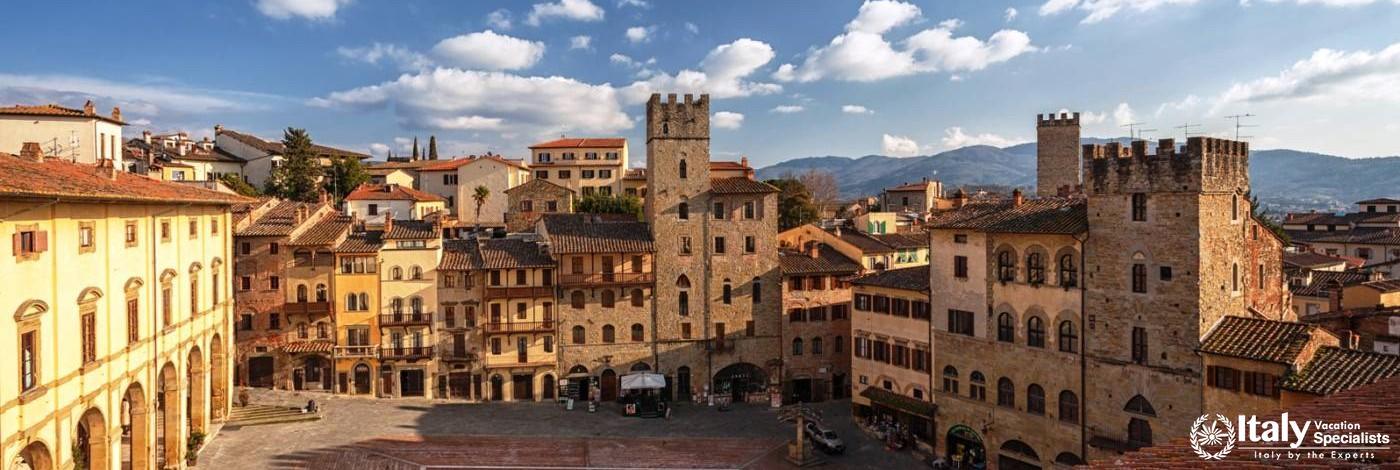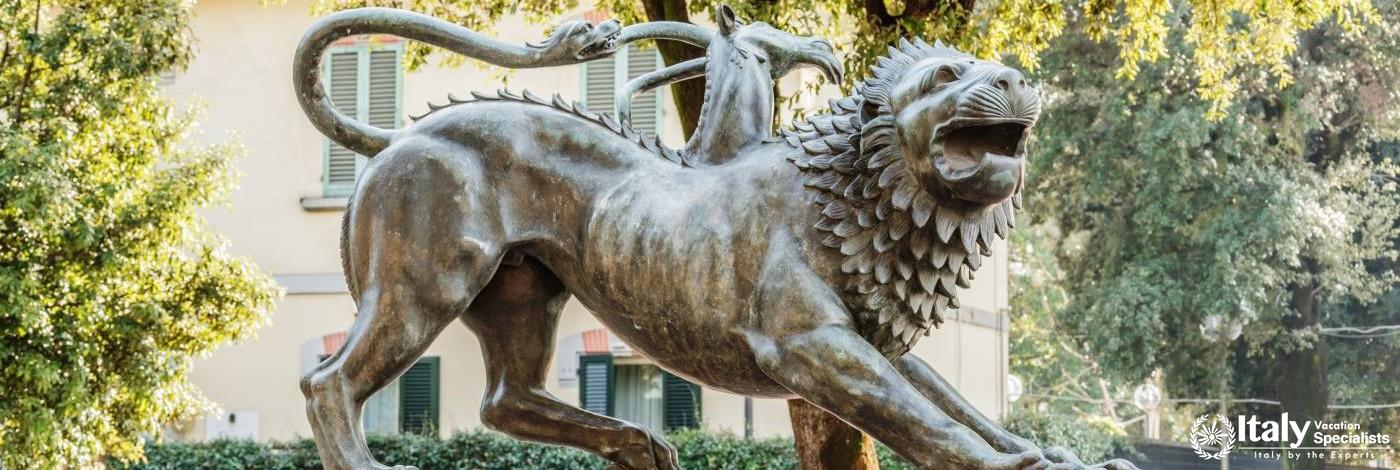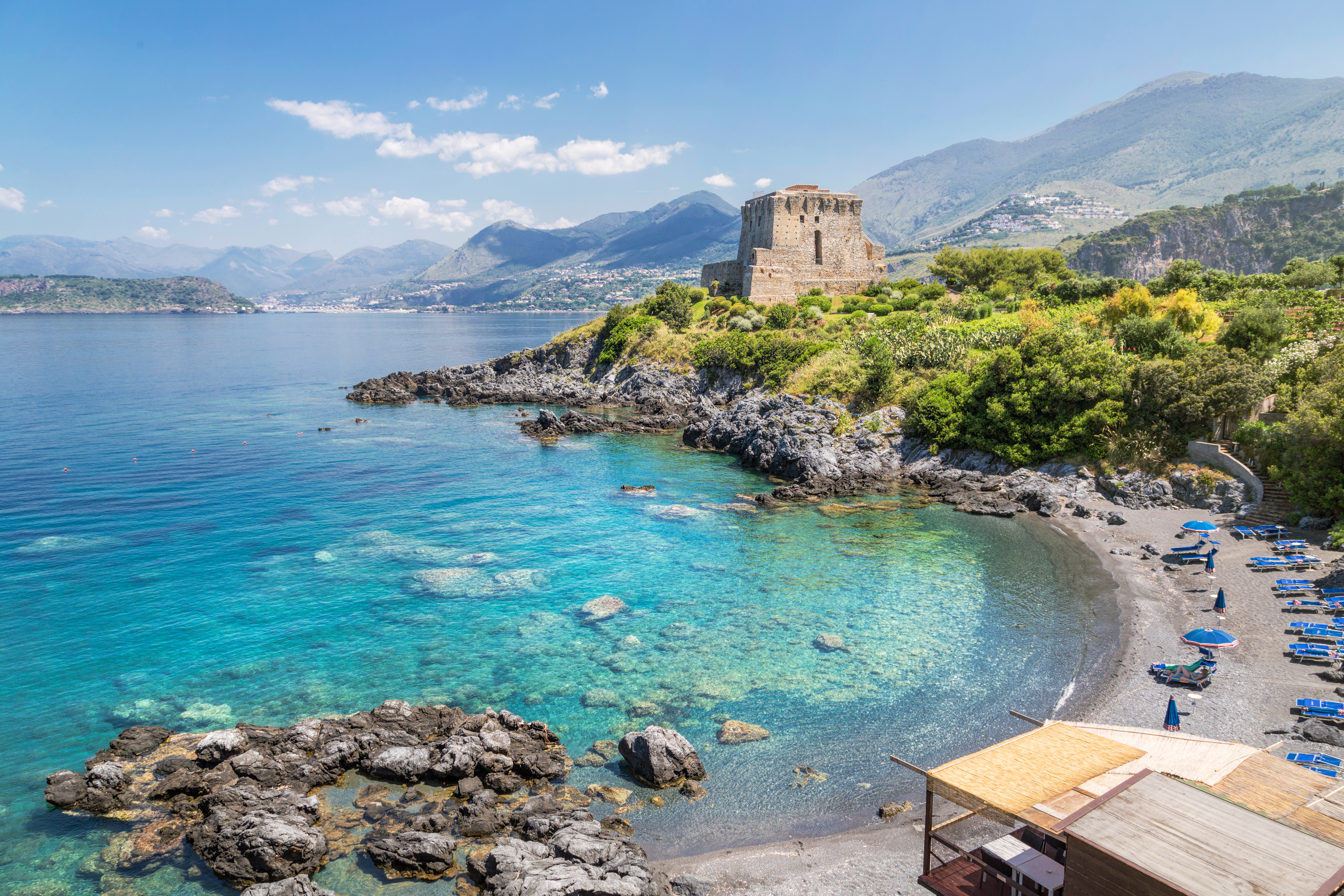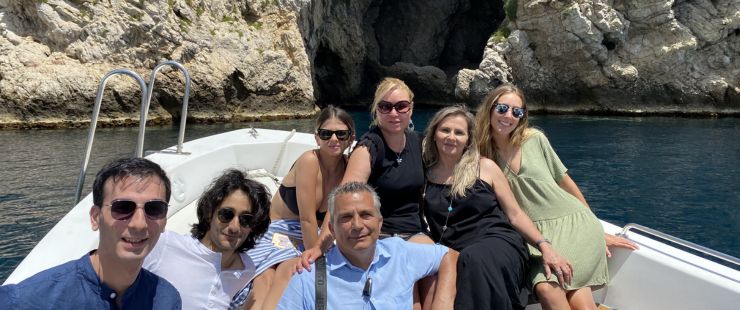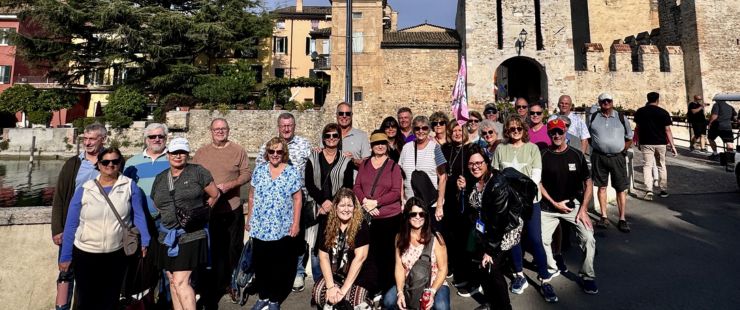Overview
Arezzo descends down a steep hill overlooking no less than four vineyard covered Tuscan valleys, the Tiberina, Casentino, Valdarno and Valdichiana. Great views and a sophisticated Tuscan atmosphere await those who make the climb up its principal street, via del Corso, from the lower gates to the upper part of the city.
There you will find the Duomo, the City Hall, and various other important buildings, such as the Palazzo Vasari, facing the expansive Piazza Grande. Along the way, and on the streets that branch off the Piazza, you will discover many fine boutiques, restaurants, cafes and gelaterias.
If you are a movie fan, you may find the surroundings of the Piazza Grande somewhat familiar: Arezzo is the principal setting for Roberto Begnigni's wonderful film, "Life is Beautiful". (Begnini was born in nearby Misericordia).
The Duomo - the Cathedral of San Donato - Arezzo's patron saint - is impressive, as are many of the other churches in and around Arezzo. The tomb of Pope Gregory VI is in the Duomo, along with beautiful stained glass windows. But, special mention goes to Chiesa Santa Maria della Pieve, an extraordinary example of Romanesque architecture, and to Chiesa San Francesco, where you will stand in awe of a gorgeous cycle of frescoes on the Life of the True Cross painted in the 16th century by the inimitable Piero della Francesco. The artist, Cimabue, created a fabulous crucifix which hangs in the Chiesa San Domenico.
Neither does Arezzo not want for museums: there is a State Museum of Medieval and Modern Art; a Civic Musuem of Contemporary and Modern Art, and a Diocesan Museum, and the also an Gaio Cilnio Mecenate Archaeological Museum. Museum-goers should also keep an eye out for the Casa-Museo Ivan Bruschi, Palazzo Vasari, and Casa del Petrarca.
If you are a lover of Italian festivals, come in July for the Abruzzo Wave and enjoy a week of rock concerts and related events. If you want something more evocative of Abruzzo's medieval heritage, come in late August-early September for the Joust of the Saracens. Riders and horses dressed in medieval garb carry lances and charge a Saracen effigy through a boistrous throng.
Once you've had your fill of all things man-made, be sure to take time to move through charming medieval streets to the periphery of the upper city where you will find vantage points from where you may look into the surrounding Tuscan landscape. These prospects are a wonderful tonic for the harried soul!
The present day, manifesting an ancient past, is more than enough for most. But, for history buffs, we offer this merest summary of Arezzo's evolution over a long period of time.
The hill upon which Arezzo now sits was settled as long ago as 800 BC by the Etruscans, and eventually became one of the twelve most important cities in Etruria - together known as the Dodecapoli. The Etruscans absorbed or displaced the original Villanovan tribes, whose life here dates from well before the Bronze Age.
Nothing remains of the Villanovans, and apart from fragments of their enormous walls, a few scattered foundations, and various unearthed household objects, and objects of art, not much remains of the Etruscans.
The Romans conquered Arezzo in the 3rd century BC, and as Arretium, the city prospered as an administrative and military center. After the fall of Rome, the city suffered the same vicissitudes as other Tuscan towns and cities, but endured.
Arezzo was made an Episcopal seat very early in the Christian era, and its Bishops, as nearly omnipotent feudal lords, exercised immense secular power, at times even contesting the power of the Pope.
In 1384 Arezzo, one of several powerful city states that developed during the middle ages, succumbed to the greater power of Florence under the Medicis, and found itself firmly within the Grand Duchy of Tuscany. The Medicis, ever protective of their interests, built an impressive and intimidating fortress in the city.
Under Florentine rule Arezzo continued to prosper as an agricultural center and as a place of manufacture of a unique metal pottery called bucchero that had been made here long before the Renaissance, but it began a long period of decline in the late 16th century.
Like other Tuscan cities, the people of Arezzo endured the centuries long inter-city and internecine fighting between the Guelphs (supporters of the Pope) and the Ghibelline's (supporters of the Holy Roman Empire), Arezzo, for the most part, taking the side of the latter.
In the very late 18th century Later, the city was conquered by Napoleon's troops, a conquest the independent minded citizens heartily resisted with a legendary underground movement that came to be known as "Viva Maria".
In the mid-19th century, Tuscany, and with it Arezzo, was annexed to Italy. In the 20th century, when the fascists under Mussolini went to war, the city suffered heavy damage as the Allies swept up the Italian peninsula to drive out the Nazis.
Today, this city of 90,000 plus people bustles with activity, the seat of government for the Province of Arezzo and supported by an array of secondary and tertiary industry. The city also earns its keep out of the pockets of tourists, most of whom arrive during the hot months of July and August. Our advice - come during the late spring or early fall - and miss the crowds.
Gallery
Location
Private and Small Group Tours
Multi-Day Holidays Tours
Hotel
Apartment
Gallery
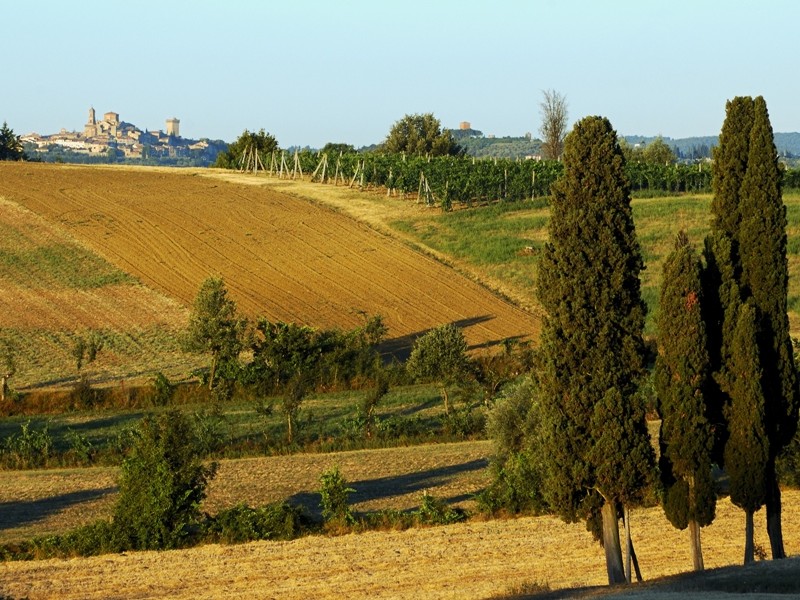
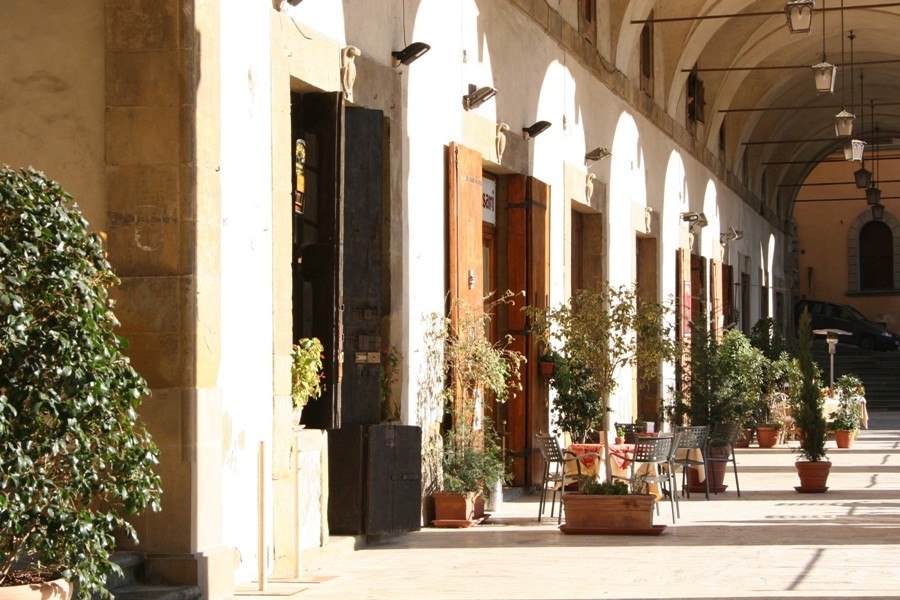
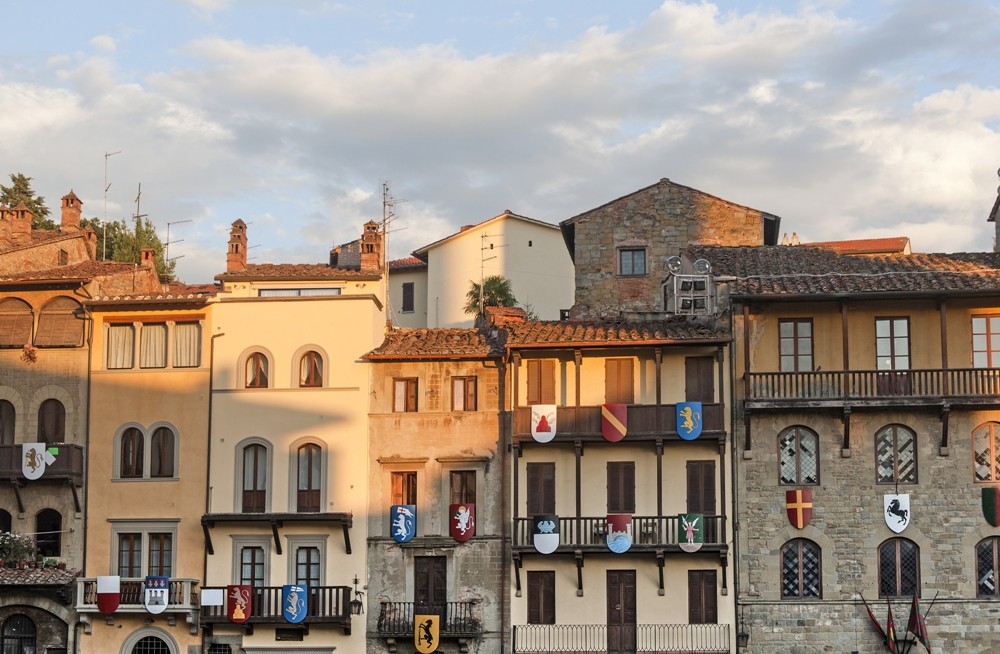
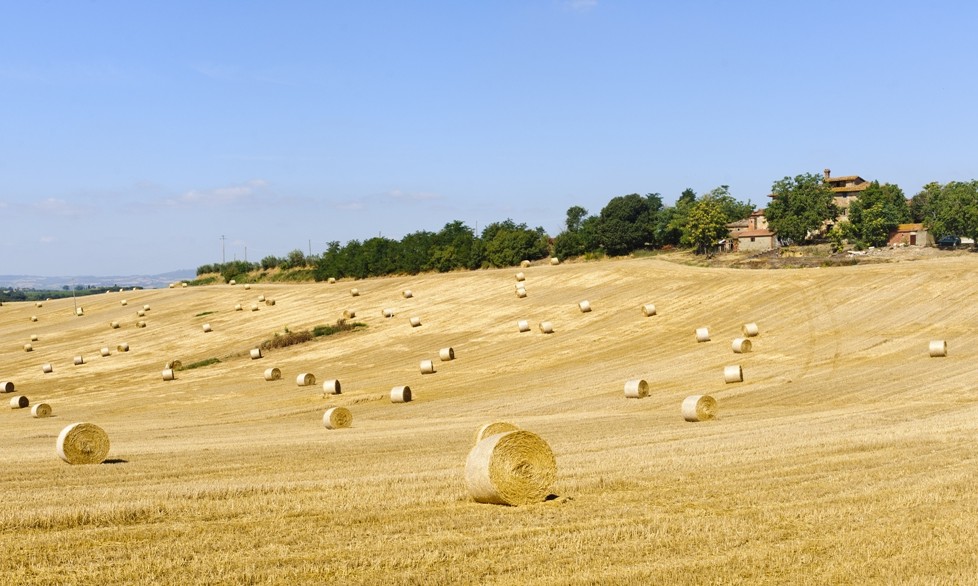

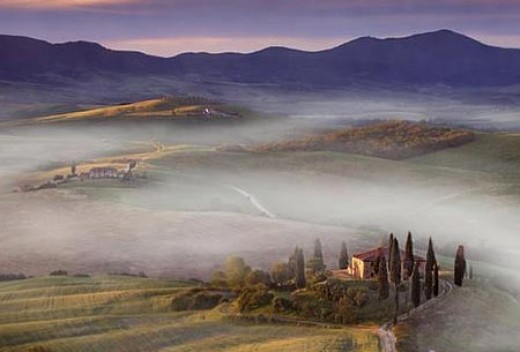
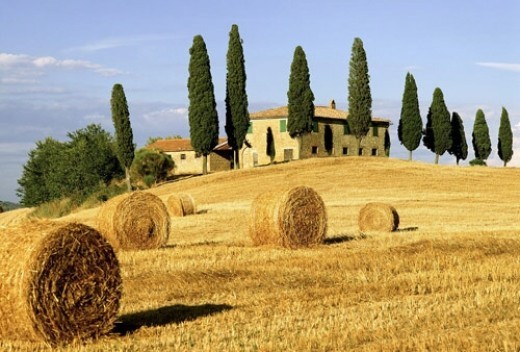
Our Multi-Day Holidays Tours
Our Featured Properties
For Customized Holidays and Expert Advice, for travel in Italy and the Mediterranean,
get in touch with your travel agent or contact us via our
Trip Planning Questionnaire.
-
Direct In Italy: +39 375 823 5314
-
Toll Free: 1-866-779-2565
